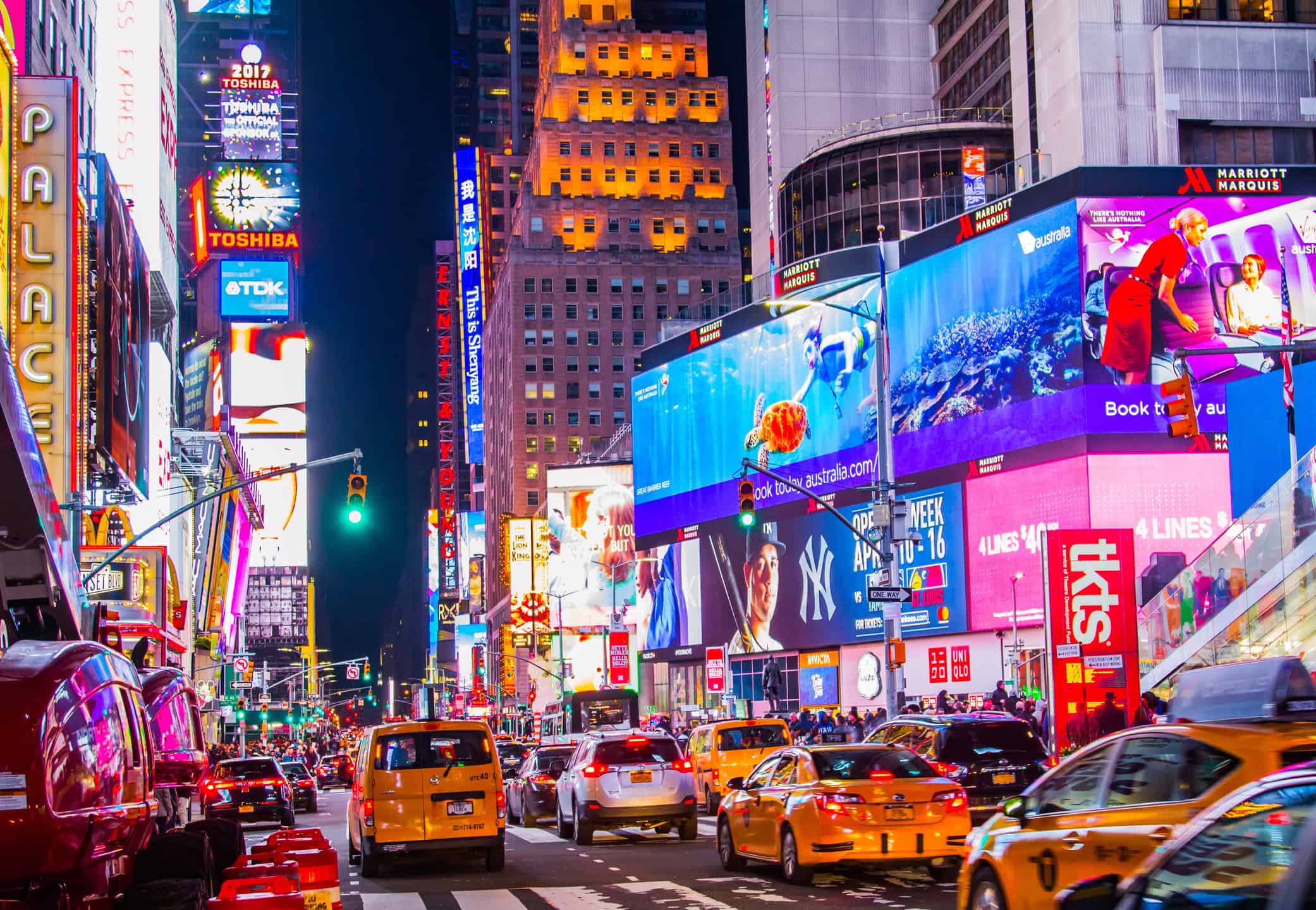Over 80% of people in the United States currently live in urban areas, and experts project that rate to increase to nearly 90% by the year 2050. Cities typically offer greater economic opportunities over rural areas, in addition to increased options for education, healthcare, and leisure activities. As we look to the future, what will be the country’s largest city in 2030? Keep reading to learn about the fastest growing cities in the United States, including which city is poised to be the largest in the country by 2030.
1. New York, New York
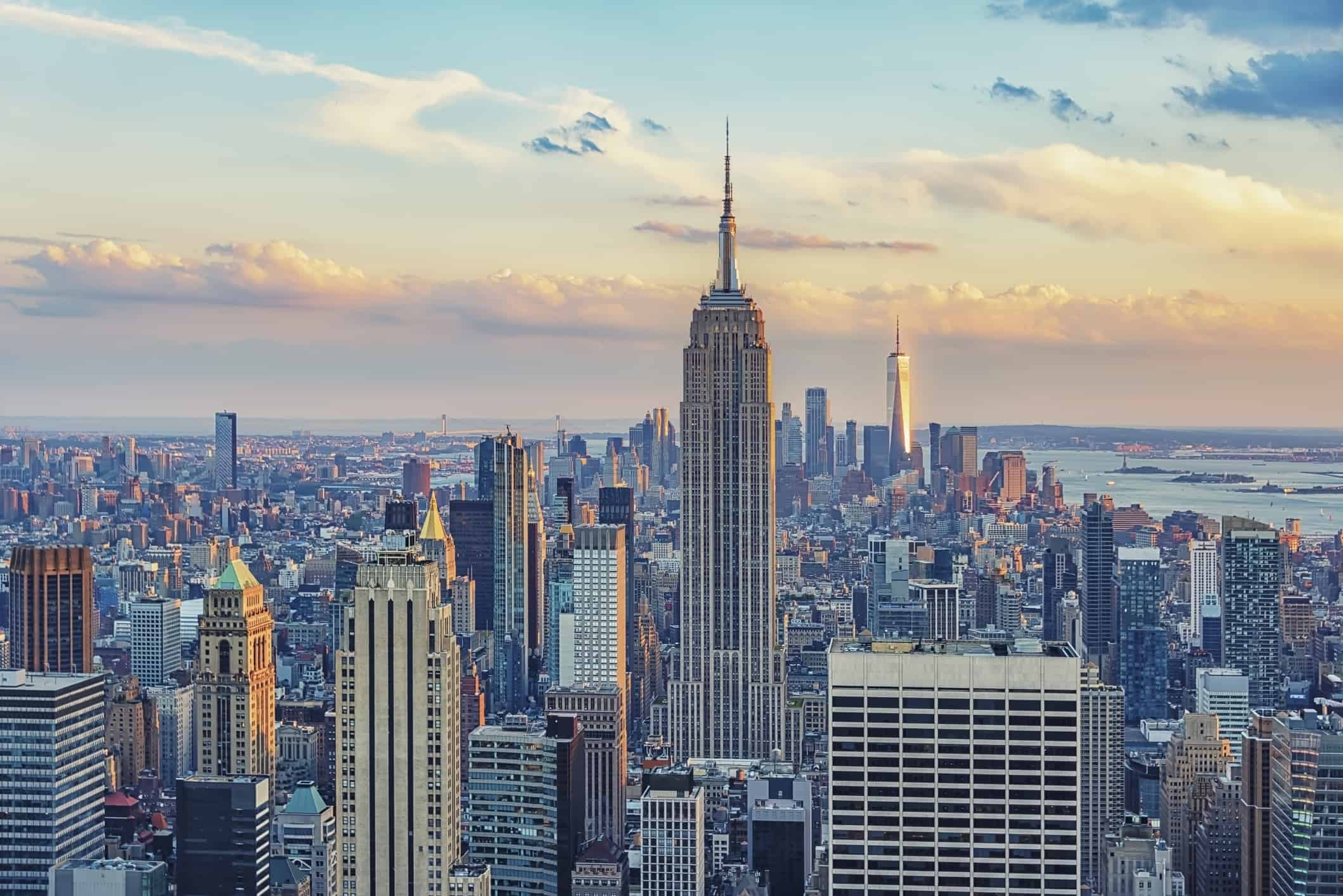
Experts predict that the city of New York will grow to 8.8 million people by 2030.
©StockByM/iStock via Getty Images
Although the city’s population has declined in recent years, New York continues to be the country’s largest city with around 8.3 million residents. It may not be growing as quickly as other cities on this list, but the sheer size of its population ensures that it will remain as one of the country’s largest cities in the near future.
The City of New York’s Department of City Planning projects that the city’s population will reach 8.8 million people by 2030. The department has projected that the Bronx and Brooklyn will experience the most growth through the decade, with growth predicted to slow in all five of New York’s boroughs in the following decade.
If the city continues to grow at the expected rate, it will continue to be the country’s largest city in 2030. With a vibrant economy and world-class destinations like Times Square and Fifth Avenue, the city will remain a top destination for people seeking opportunity and adventure.
2. Los Angeles, California
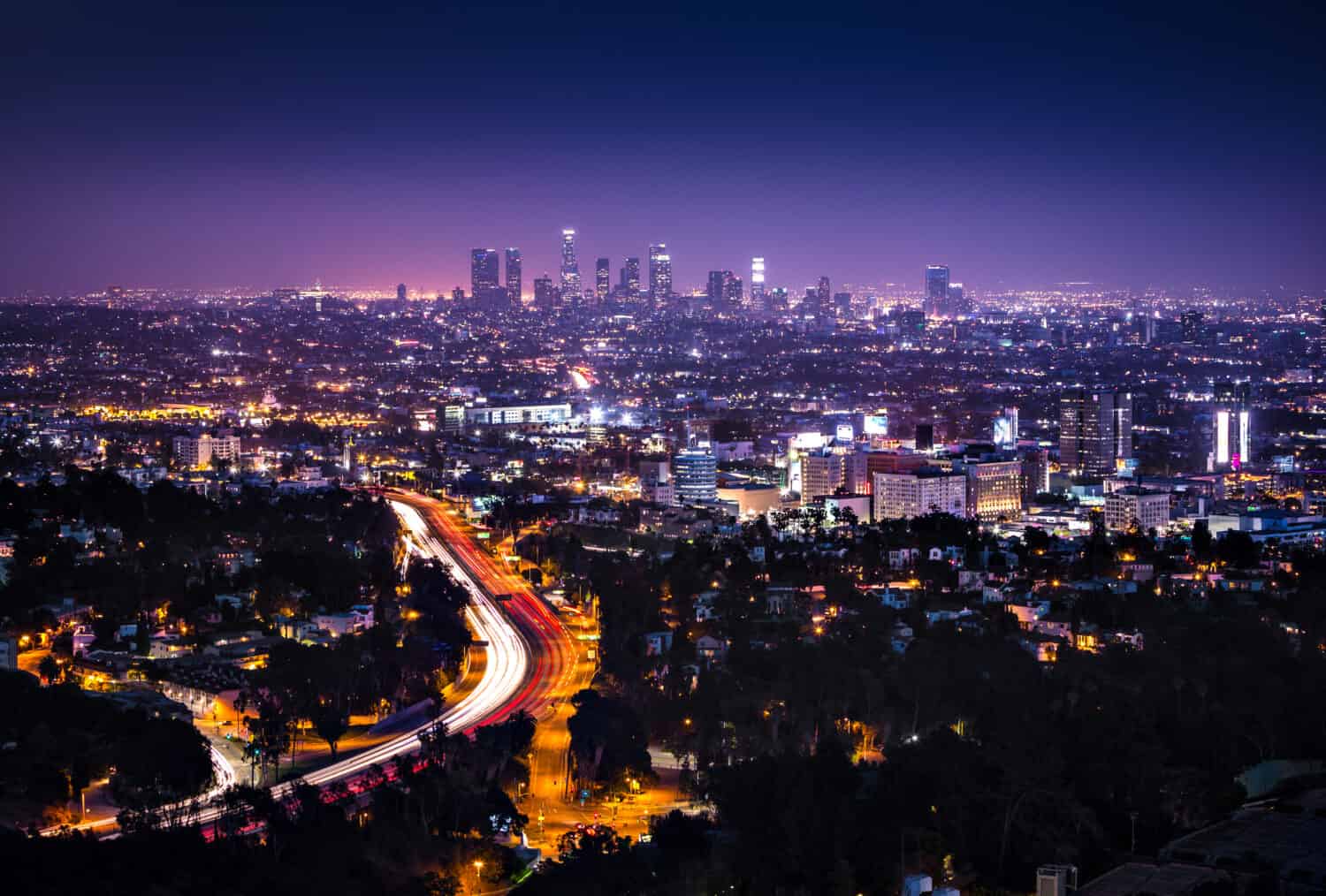
Despite recent declines, the population of Los Angeles is expected to stabilize and grow in coming years.
©Sarah Fields Photography/Shutterstock.com
With nearly 3.9 million residents, Los Angeles is the second most populated city in the country. Like other large metro areas, its population declined during the COVID-19 pandemic. From 2020 to 2021, the city lost just over 40,000 residents. Another 100,000 residents left between 2021 and 2022.
Despite these recent losses, the city’s population is expected to stabilize in the coming years. California has been working to manage an ongoing housing shortage, adding over 120,000 new housing units in 2022. Experts predict that the population of Los Angeles will grow by around 1% annually.
As the home of the country’s film and entertainment industry, Los Angeles will almost certainly continue to grow in the coming years. Although the city faces challenges from recent population declines and a lack of available housing, it will continue to be a highly sought-after area due to its robust economy, educational institutions, hospitals, and cultural scene.
3. Chicago, Illinois
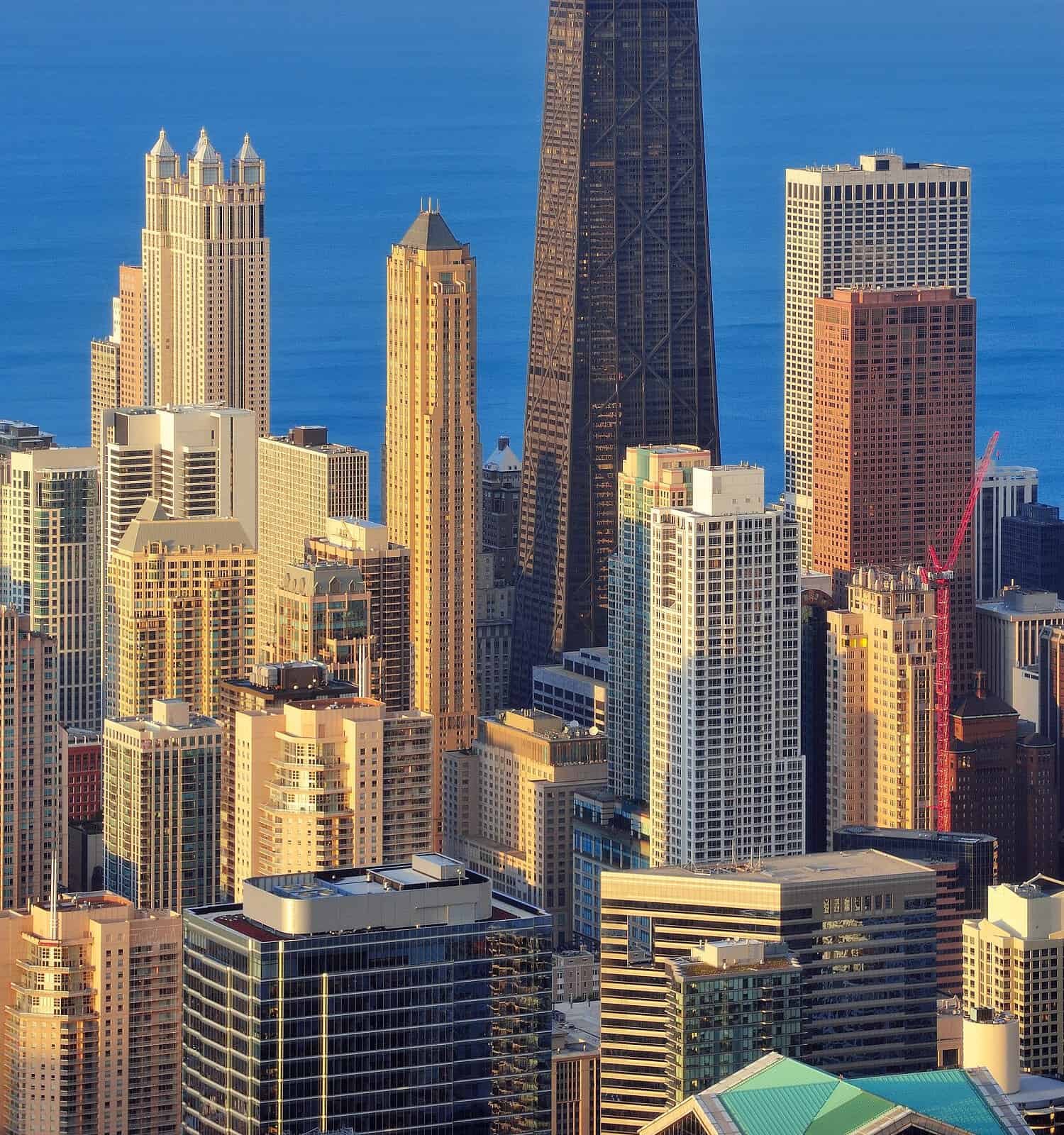
Also known as the Windy City, Chicago is the nation’s third most populated city with 2.6 million residents.
©Songquan Deng/Shutterstock.com
Located on the southern shores of Lake Michigan, Chicago has been a hub for commerce, trade, and culture for decades. The city’s current population is around 2.6 million residents. In 2021, the Illinois Department of Public Health projected that the city’s population would grow to a solid 2.7 million residents by the year 2030.
Chicago’s population shrank during the pandemic, although at a slower rate than other large cities. The city lost over 45,000 residents from 2020 to 2021. Research indicates that economic inequality and a lack of affordable housing have been driving people away from the city. These obstacles have had a disproportionate impact on Chicago’s Black population, which experts predict could drop by 50% by 2023.
To reverse this trend, city leaders are working to increase development and bring new amenities to residents. A Health and Wellness Campus has been slated for development at 79th and Halsted, which will include space for a bank, a farmers market, housing, and services for seniors. In addition, the construction will include two developments of affordable housing with a grocery store, retailers, and a campus for urban farming.
4. Houston, Texas
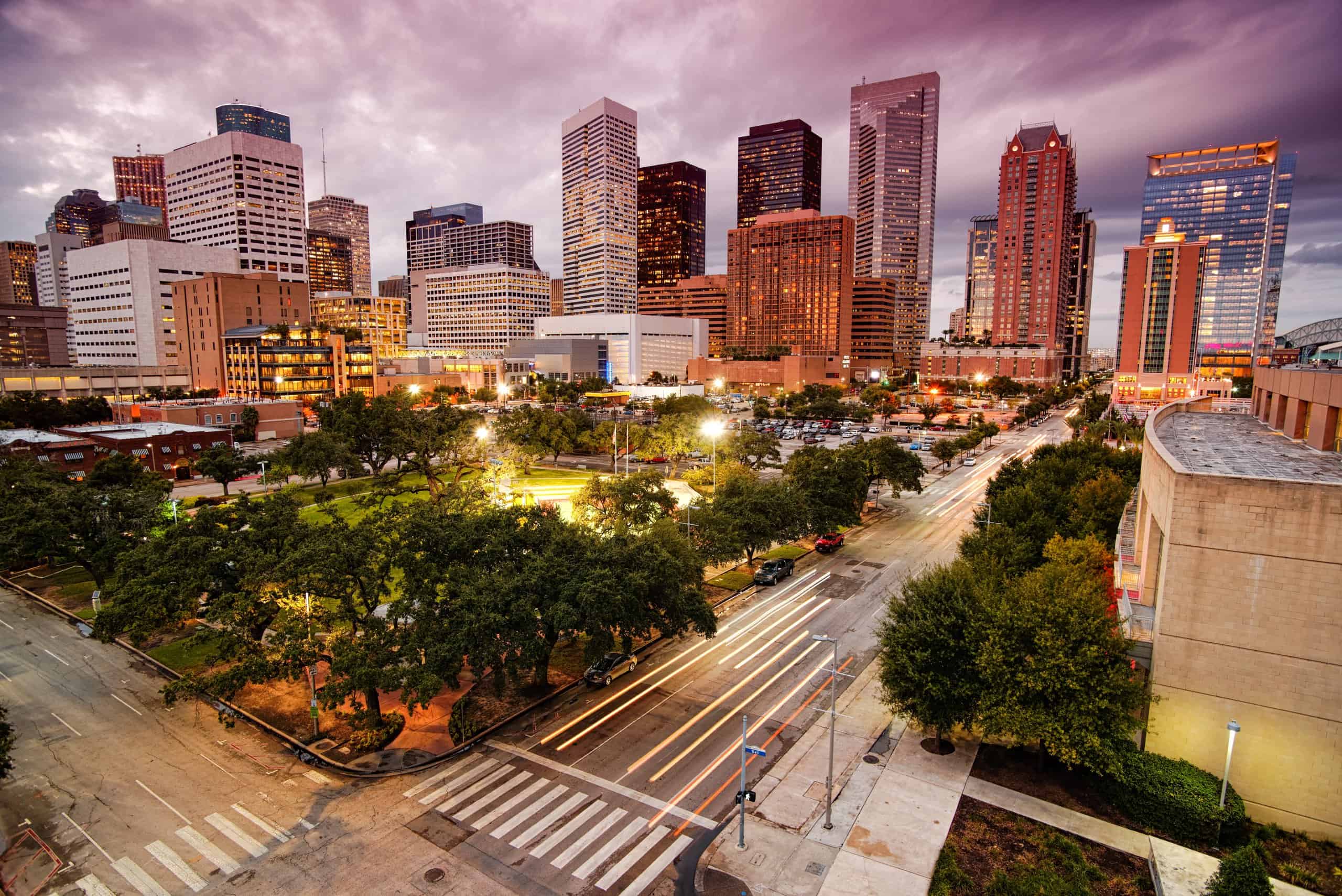
Houston has grown steadily over the past decade and could soon become the country’s third largest city.
©Silvio Ligutti/Shutterstock.com
Located in southern Texas, Houston is set to potentially overtake Chicago as the country’s third largest city by 2030. Houston’s population is currently around 2.3 million people, and the Texas Water Development Board has projected a population of nearly 2.8 million people by 2030.
Houston has experienced rapid population growth since the early 2010s. The city boasts economic prosperity, plenty of jobs, and affordable housing options. In addition, Houston offers plenty of options for outdoor recreation, which make it an attractive place to live.
While other cities experienced population declines during the pandemic, Houston grew by 11,000 residents from July 2021 to July 2022. Experts anticipate that Houston will soon have a larger population than Chicago. Some experts expect that the city will overtake Los Angeles to become the country’s second largest city by 2100.
5. Phoenix, Arizona

Phoenix’s population could exceed two million residents by 2030.
©iStock.com/gillcouto
For almost a decade, Phoenix has been among the country’s fastest growing cities. From 2017 to 2021, the city was the country’s number one fastest growing municipality. Phoenix also has the distinction of being the fastest growing city from 2010 to 2020. While many large cities saw their population shrink during the pandemic, Phoenix added nearly 20,000 new residents from July 2021 to July 2022.
Phoenix’s population is currently around 1.6 million, and experts predict that the city’s population will reach 2.2 million residents by 2030. The city’s economy is based on technology, manufacturing, and tourism, with more than 700,000 jobs projected to be added to the state by 2030, many in the Phoenix area. In addition to a robust economy, Phoenix offers residents an abundance of sunny weather and a multitude of recreational activities.
Summary of the Largest U.S. Cities in 2030
| Rank | City | Projected 2030 Population |
|---|---|---|
| #1 | New York, New York | 8.8 million |
| #2 | Los Angeles, California | 4.5 million |
| #3 | Chicago, Illinois | 2.7 million |
| #4 | Houston, Texas | 2.8 million |
| #5 | Phoenix, Arizona | 2.2 million |
Thank you for reading! Have some feedback for us? Contact the AZ Animals editorial team.

